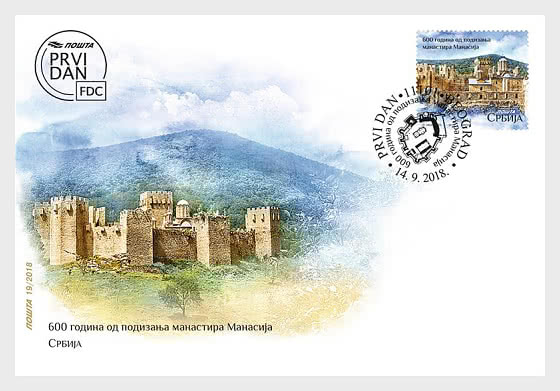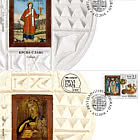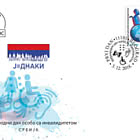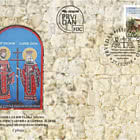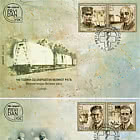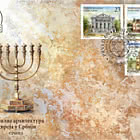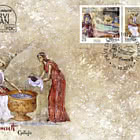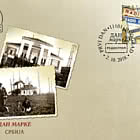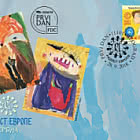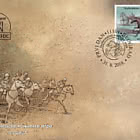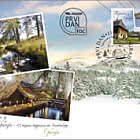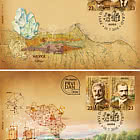The Resava Monastery, today known as Manasija, is the endowment of the Despot Stefan Lazarević, the Serbian ruler, the son of Duke Lazar and Duchess Milica, the knight of the Order of the Dragon, the enlightener and the patron of arts and culture.
Manasija is considered to be one of the greatest achievements of Serbian architecture of the late Middle Ages, whose uniqueness lies in its fortification, designed according to all the rules of medieval fortification, which was built with the aim of protecting the monas¬tery settlement. According to Constantine the Philosopher, the construction of the monas¬tery began in 1407 and was completed in 1418. By building a monastery with the Church of the Holy Trinity, Despot wanted to build himself a mausoleum during his own lifetime.
The Church of the Holy Trinity, the central object of the monastery, belongs to a group of Moravian monuments of a developed type, and the direct model for this structure was the mausoleum of Duke Lazar. Thus in Resava, the developed cross plan combined with trikonhos, previously already implemented in Ravanica and Ljubostinja monasteries, was adopted. The diverse elements and architectural experiences, primarily present during the time of Despot, but also noticeable in endowments of the Nemanjić lineage, are remarkably combined in the Church of the Holy Trinity, making one harmonious whole. Naos is of a rectangular base, ending – on the eastern side, with a three-part altar space with semi-circular apses on the inside. On the outside, the central apse is five-sided, while the wings are three-sided. The monastery’s church narthex is square based, and its width corresponds to the width of the naos.
The upper arch structure was made, as in the naos, in the form of a developed cross. Inside the narthex, the stone floor, made of white marble, green serpentine breccia and red limestone, was partially preserved.Manasija’s iconography is, by its beauty, one of the most important achievements in medieval Serbian painting. The best painters of that time painted the frescoes of extraor¬dinary beauty, aristocratic elegance, with luxurious colouring and vivid spiritual message.
Stamp Motif: The Monastery Church of the Holy Trinity with the remains of the dining room and towers in the background. Vignette Motifs: Central Vignette in the sheet – Patron fresco on the western wall of the naos; Lower Vignette – Fresco Holy Warriors, Aretos, Nestor, and Nikita, north choir space; Upper Vignette – Fresco Descent of the Holy Spirit upon the Apostles, naos entrance; Vignettes on the left and on the right in the sheet – Manasija Monastery.
Expert collaboration: Serbian Orthodox Church, Eparchy of Braničevo.
Artistic realization: Nadežda Skočajić, Academic Graphic Artist
